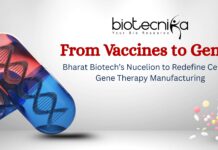SuperSemblance: Identical Twins, Identical Genes, Identical Epigenetics
PS. Don’t let those creepy ones from the Shining distract you.
They have the same piercing eyes. The same color hair. One may be shy, while the other loves meeting new people. Some characteristics of these identical twins may differ—despite having the same DNA— but they apparently have matching epigenetics a new study finds.
The term epigenetics was originally introduced to describe how interactions between genetics and environment can give rise to phenotypes during development. Monozygotic twins have long been studied to estimate heritability and explore epigenetic influences on phenotypic variation. The phenotypic and epigenetic similarities of monozygotic twins have been assumed to be largely due to their genetic identity.
Now, an international group of researchers has discovered a new phenomenon that occurs in identical twins: independent of their identical genes, they share an additional level of molecular similarity that influences their biological characteristics.
“The characteristics of an individual depend not only on genes inherited from the parents but also on epigenetics, which refers to molecular mechanisms that determine which genes will be turned on or off in different cell types. If we view one’s DNA as the computer hardware, epigenetics is the software that determines what the computer can do,
” said senior author Dr. Robert A. Waterland, associate professor of pediatrics — nutrition at the USDA/ARS Children’s Nutrition Research Center and Texas Children’s Hospital and of molecular and human genetics at Baylor College of Medicine.For the current study, the team examined a group of genes called metastable epialleles. It has been suggested that methyl tags are randomly added to metastable epialleles during early embryonic development and maintained throughout life.
“We expected that the patterns of methyl tags added to metastable epialleles would be equally random in identical twins and fraternal twins,” said Waterland. “Instead, we found that the methylation patterns matched almost perfectly in identical twins, a degree of similarity that could not be explained by the twins sharing the same DNA. We call this phenomenon ‘epigenetic supersimilarity.’”
“If, in this group of genes, the epigenetic markers are established before the embryo splits into two, then the markers will be the same in both twins,” said Waterland. “In essence, both twins inherit an intimate molecular memory of their shared developmental legacy as a single individual. On the other hand, genes at which epigenetic markers are set after the embryo splits can have greater epigenetic differences between the two twins.”
Although these genes a relatively small group that are affected by epigenetic supersimilarity, the researchers discovered that many of these genes are associated with cancer. To determine whether these epigenetic markers might influence the risk of cancer, the team collaborated with experts in Melbourne, Australia.
“By analyzing peripheral blood DNA samples from healthy adults in our study, we have been able to show that methylation at epigenetically supersimilar genes is associated with risk of subsequently developing several types of cancer, including lung, prostate and colorectal cancer,” said study co-author Dr. Roger Milne, head of Cancer Epidemiology at Cancer Council Victoria.
“Our findings should prompt a re-evaluation of previous genetic studies on twins,” said Waterland. “For decades, researchers have studied genetically identical twins to estimate what proportion of disease risk is determined by one’s genes. To the extent that epigenetic supersimilarity affects risk of disease, as our results indicate, genetic risk estimates based on twin studies have been inflated.”
























